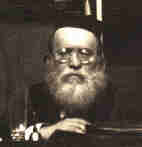 |
Hadrash Ve-Haiyunby the Reisha Rav, HaGoan Rav Aaron Levine Tz"lElucidated and Adapted by Efraim Levine |
 |
Hadrash Ve-Haiyunby the Reisha Rav, HaGoan Rav Aaron Levine Tz"lElucidated and Adapted by Efraim Levine |
Terumah
Dedicated in Honor of
Margalit Gita Mitzner
To Dedicate Please Contact Hadrash Ve-Haiyun
They shall make me a Sanctuary so that I may dwell among them
in conformance with all that I show you, the form of the
Tabernacle and the form of all its vessels; and so shall you
do.
(Shemos 25:8-9)
The mishkan is divided into three distinct sections, the outer courtyard, the tent of meeting and the kodesh hakadashim. Each section contained its own unique appurtenances. The outer courtyard contained the lever and the copper altar. The tent of meeting contained the shulchan, the golden altar and the menorah. The kodesh hakadashim contained the aron with the kopores and keruvim.
Let us suggest that these three sections of the mishkan directly correspond to the three domains in which we Jews interact. Namely, the public domain, the home and places dedicated to the service of Hashem, i.e., shuls and batei medrashim. Likewise, the specific appurtenances of each section highlight specific areas of conduct that are required of us in these domains.
First, let us discuss the outer courtyard. This section corresponds to the public domain where commerce is conducted. The first appurtenance found here is the lever. The implied message is that in business first we must keep our hand and feet clean. We are forbidden to soil our hands by taking what is not ours, i.e., theft. Likewise we may not soil our feet by trespassing onto another's domain of business where we prevent that individual for attaining what is rightfully his, i.e., hasagas gevul. However, business ethics doesn't end with criminal conduct. There are cases where actions may be legal according to the letter of the law, but do not conform to the spirit of the law. It is here that we are introduced to the altar. The altar symbolizes sacrifice. In business there are times we are obligated to make great sacrifices even when we think and perhaps know that we are correct. This may fall under the category of lifnim meshuras hadin. (See the works of Rabbi. Dr. Aaron Levine, grandson of the Reisha Rav zt"l especially his most recent publication Case Studies in Jewish Business Ethics, 2000 Ktav publising Company inc., Hoboken, NJ)
Next we come to the tent of meeting. This chamber corresponds to the Jewish home. The unique appurtenances here are the shulchan, the menorah, and the golden altar. The shulchan symbolizes the importance of kosher food and the mitzvah of inviting the poor to eat at our table (hachnosos orchim). Next we find the menorah which symbolizes the obligation to set aside time for the studying of Torah. There are many who have the custom to set aside time to study Torah in their places of work and in the beis medrash but Hashem put the menorah specifically here in the tent of meeting to stress the importance of setting aside time to study Torah in the home. The proper atmosphere of a Jewish home can only be created with the study of Torah in the home itself. Finally we have the golden altar which symbolizes the sacrifices we must make for what we consider the gold of our lives. Specifically, scarifies we make so that our children receive an excellent Torah education. The sacrifices must produce a sweet aroma like the ketores. The implied message is that complaint and bitterness must not accompany the sacrifices we make but only sweetness, otherwise the family may come to resent their hardship and this may have terrible repercussions years later.
Finally we come to the kodesh hakadashim which corresponds to the shuls and batei medrashim. In this chamber we find the keruvim embracing. This symbolizes unity and harmony among us. Although it many seem self-evident, the Torah finds it necessary to emphasize that in order that our Torah and teffilah be acceptable before Hashem we must achieve harmony and unity in our interpersonal relations.
With this ideas we may now reinterpret the posuk. The posuk reads: "in conformance with all that I show you, the form of the Tabernacle and the form of all its vessels; and so shall you do." The simple interpretation of the words and so shall you do is a command to build a mishkan. However we may now suggest that the words so shall you do is a command to act and behave in all your interpersonal relationships wherever they may be by exemplifying the implied message of each appurtenance.